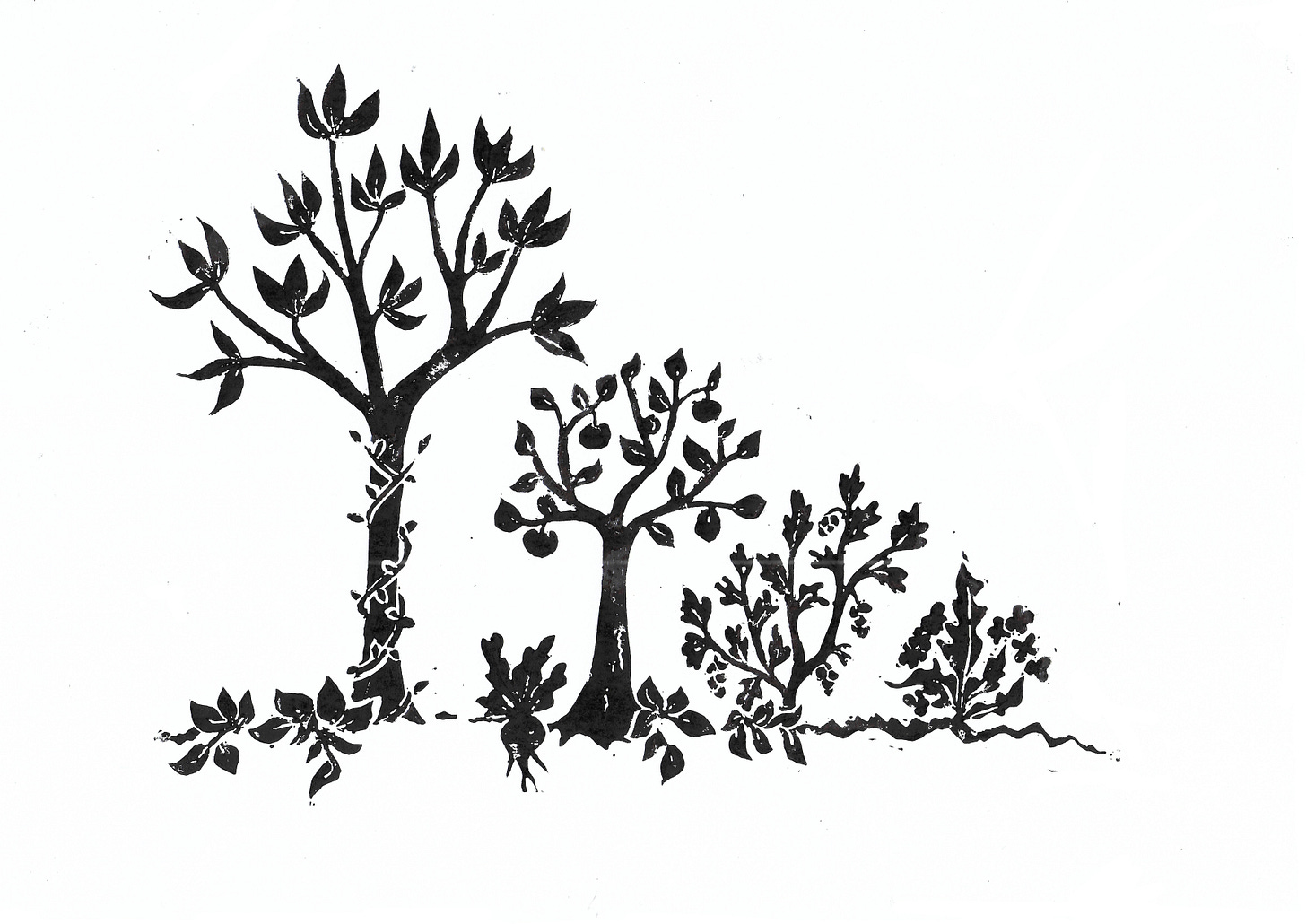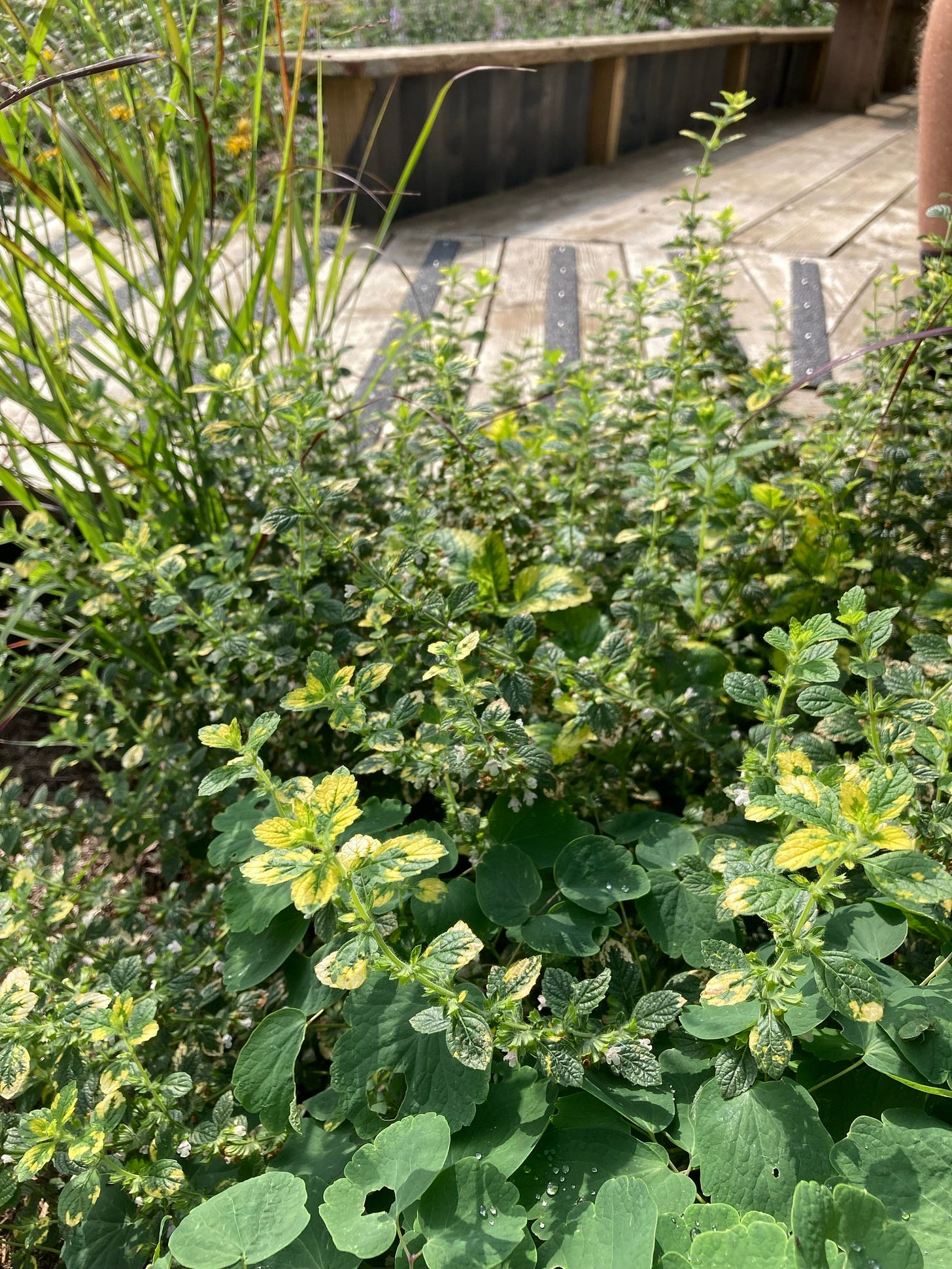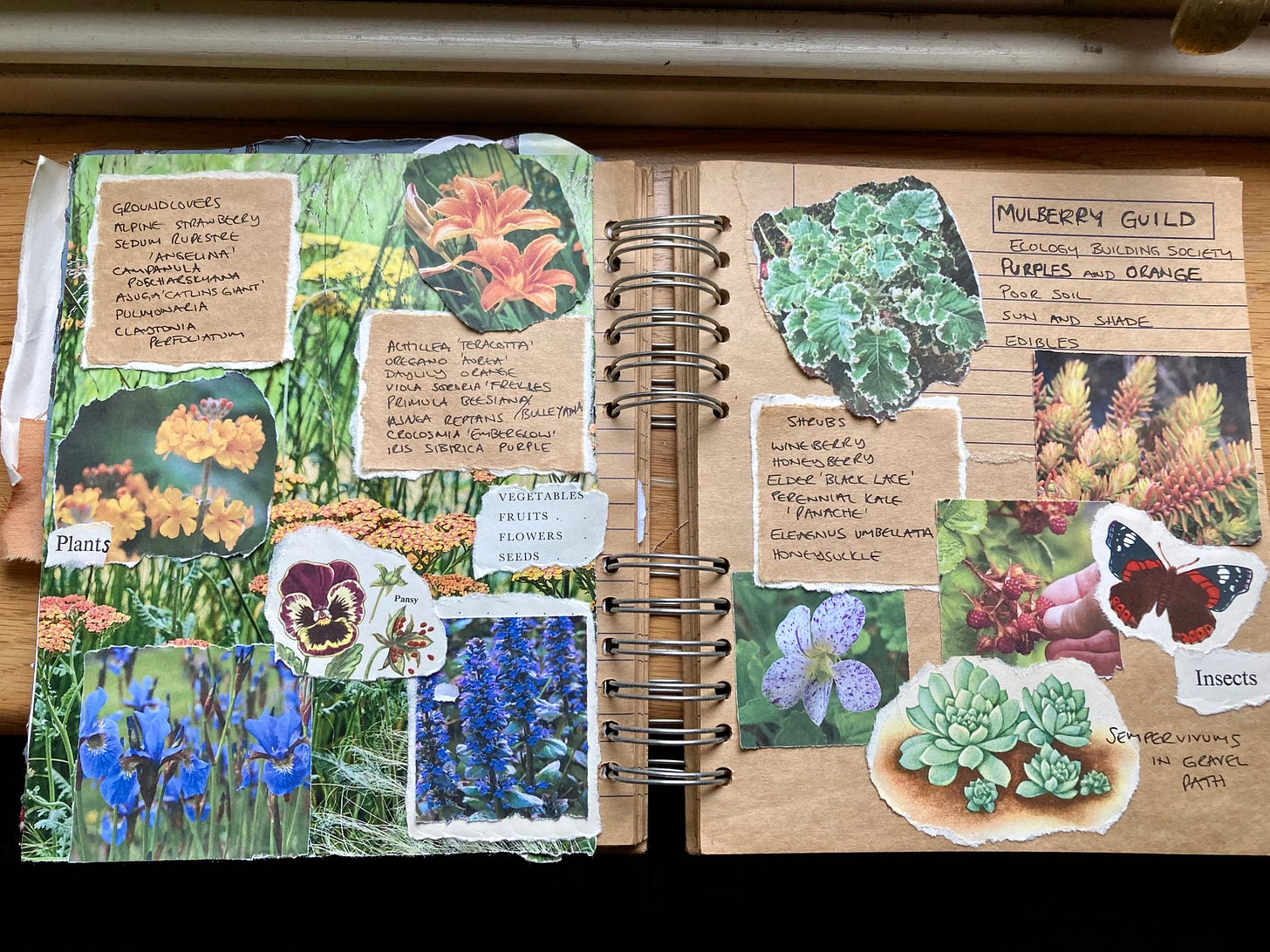Does a forest garden need 7 layers?
Natural woodlands don't tick all the boxes so why should we
Forest gardening is often defined by the 7 layers of vegetation from the root crops in the ground right into the tall tree canopy reaching for the sky, but do we need to tick off all 7 layers to be able to call ours a forest garden?
For those of you who are new to Forest gardening, the concept is based on growing food and other useful crops in a multi layered design, mimicking the natural ecology of a forest or more closely resembling a young woodland. The 7 layers consist of
1 Canopy tree layer
2 Sub canopy trees
3 Shrub layer
4 Herbaceous layer of perennial vegetables and herbs
5 Ground cover layer
6 Root crops growing below ground
7 Climbing plants growing through the other layers
(some also include a wetland/aquatic and mycelial/fungal layer)
In reality some of the herbaceous layer like Jerusalem artichoke or chicory can tower over short shrubs such as rosemary or blackcurrant. I have grown perennial kale trained as a tree which was twice the height of my dwarf apple tree. So whilst the definition of layers is helpful in understanding the pattern and structure of a forest garden, I feel it shouldn't be used too rigidly.
It should be a source of inspiration rather than a constraint. My good friend and forest gardener extraordinaire Tomas Remiarz once said 'Where are the forest garden police to tell you it doesn't meet the criteria?' I always remember this quote with a smile as a reminder not to take it all too seriously, permaculture gardening is meant to fill your heart with joy.
Forest gardening is about taking inspiration from the abundance of natural woodland and anyone who has spent time in woodlands will have noticed they are all different. Birch (Betula pendula) woodlands with their open canopy can be rich in grasses, wild flowers and sub shrubs while Beech (Fagus sylvatica) woodland with its dense shade and deep carpet of fallen leaves and husks means little grows underneath.
Be inspired by natures very effective use of the vertical when looking to maximise your harvests from the garden by adding shade loving berry bushes such as gooseberry and redcurrant and herbs like lemon balm (Melissa officinalis) and peppermint (Mentha x piperita) under your fruit trees. Fill any gaps with alpine strawberries (Fragaria vesca) and bugle (Ajuga reptans) to feed yourself and the bees and leave no room for unwanted weeds.
Add in a hardy kiwi if you have something for it to scramble over and Oca can tick the box for root crops but if you would rather squeeze in more herbs than a root crop then go ahead, you are still growing a forest garden, tweaking the layers to suit your needs. Afterall, permaculture design is all about meeting our needs whilst being inspired by and working in harmony with nature. In nature, forests certainly don't worry about ticking all the boxes so why should we








